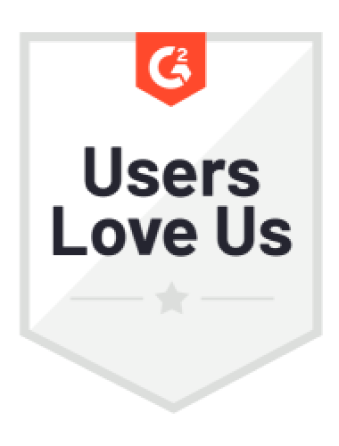What is Role-Based Access Control (RBAC)?
Discover the essentials of Role-Based Access Control (RBAC) in this article.

Role-Based Access Control (RBAC) is a critical framework for managing user permissions within an organization. This model aims to restrict system access to authorized users based on their roles. By defining roles within an organization, RBAC enhances security while ensuring that users have the necessary access to perform their jobs efficiently.
Understanding the Basics of RBAC
At its core, RBAC focuses on the principle of least privilege, allowing users to access only the resources they need. This minimization of access prevents unauthorized actions and reduces the risk of security breaches. Implementing RBAC involves specifying user roles and determining permissions that belong to each role. This structured approach not only enhances security but also streamlines the user experience, as individuals can focus on their specific tasks without the distraction of unnecessary options.
Definition and Importance of RBAC
RBAC is defined as a method for restricting system access to authorized users based on their assigned roles. Each role encompasses various access rights associated with particular activities. The importance of RBAC lies in its ability to simplify management of user permissions, thereby enhancing overall security. Furthermore, it aids organizations in meeting compliance standards by enforcing access policies effectively. By clearly delineating roles and responsibilities, RBAC also fosters accountability, as it becomes easier to track user actions and identify potential security issues.
Key Components of RBAC
There are several key components within the RBAC model that drive its effectiveness:
- Roles: The defined classifications that group users according to their job functions or responsibilities.
- Permissions: The abilities that dictate what actions a user can perform within the system.
- Users: Individuals associated with roles, who are granted permissions according to their classification.
- Sessions: Active engagements within the system, where users can assume roles to access resources.
In addition to these core components, it is essential to consider the dynamic nature of roles and permissions. Organizations often evolve, and so do their operational needs. This necessitates a flexible RBAC system that can adapt to changes in job functions, new compliance requirements, or emerging security threats. Regular audits and reviews of roles and permissions can help ensure that the RBAC framework remains relevant and effective, allowing organizations to maintain a robust security posture while accommodating growth and change.
Moreover, the implementation of RBAC can be enhanced through the integration of automation tools. These tools can facilitate the onboarding and offboarding processes, ensuring that users are assigned the correct roles promptly and that access is revoked when it is no longer needed. This not only saves time for IT departments but also minimizes the risk of human error, which is often a significant factor in security vulnerabilities. By leveraging technology in conjunction with RBAC principles, organizations can create a more secure and efficient access management system.
The Functioning of Role-Based Access Control
Understanding how RBAC functions is essential for implementing it effectively within an organization. The model combines roles and permissions to create a seamless and secure environment for managing access.
How RBAC Works
RBAC operates through a systematic allocation of permissions linked to roles rather than to individual users. Whenever a user requests access to a resource, the RBAC system assesses the user's assigned role and the permissions associated with it. If the role includes the necessary permissions for that request, access is granted.
This approach not only streamlines access management but also enhances security by providing a clear framework for authorization. Additionally, auditing becomes more straightforward as record-keeping regarding permissions and role assignments helps track user activities. The granularity of RBAC allows organizations to define roles at various levels, from broad categories like 'employee' or 'manager' to more specific roles such as 'HR specialist' or 'IT support'. This flexibility ensures that users have only the access they need, reducing the risk of over-privileged accounts that can lead to security vulnerabilities.
The Role of RBAC in Security Management
RBAC plays a pivotal role in a robust security management strategy. By restricting access, organizations can mitigate the risks of data breaches and unauthorized actions. Moreover, in environments that handle sensitive information, RBAC ensures compliance with regulatory standards by enforcing strict access controls. For instance, industries such as finance and healthcare are often subject to stringent regulations that mandate careful control over who can access specific data. RBAC provides a structured way to meet these compliance requirements while maintaining operational efficiency.
Additionally, RBAC makes it easier for administrators to manage user roles dynamically. Adjusting user access as their roles change can be done swiftly, helping organizations maintain security without unnecessary delays. This adaptability is particularly beneficial in fast-paced environments where team structures frequently evolve. Furthermore, RBAC can integrate with other security measures, such as multi-factor authentication and logging systems, to create a comprehensive security posture. By layering these security strategies, organizations can further fortify their defenses against potential threats, ensuring that only authorized personnel can access critical systems and data.
Types of Role-Based Access Control
Different variants of RBAC exist, each tailored to meet specific organizational needs. Understanding these types is crucial for selecting the right access control model.
Discretionary Access Control (DAC)
Discretionary Access Control (DAC) allows the owner of a resource to determine who can access it. In this model, users can grant permissions to other users at their discretion, which provides flexibility but also poses potential security risks. DAC is suitable for environments where users must collaborate closely but may lead to unintentional exposure of sensitive data. For instance, in a creative team, a graphic designer might share access to design files with other team members to facilitate feedback and collaboration. However, if not managed properly, this could result in unauthorized personnel accessing proprietary designs or confidential client information.
Moreover, the inherent flexibility of DAC can create challenges in maintaining a consistent security posture. As users modify permissions, it becomes difficult to track who has access to what, potentially leading to a fragmented security landscape. Organizations employing DAC must implement robust monitoring and auditing practices to ensure that access rights are regularly reviewed and adjusted as necessary, thereby minimizing the risk of data breaches stemming from overly permissive access controls.
Mandatory Access Control (MAC)
On the other hand, Mandatory Access Control (MAC) enforces strict policies set by the organization rather than individual users. In a MAC environment, access decisions are made based on information sensitivity and user clearance level. This model is commonly adopted in highly regulated industries where data security is paramount, as it significantly reduces the risk of unauthorized access. For example, in government agencies or military operations, MAC ensures that only individuals with the appropriate security clearance can access classified information, thereby safeguarding national security interests.
Additionally, MAC systems often utilize labels or classifications to categorize data and users, which can enhance the granularity of access control. This means that even within a single organization, different levels of access can be meticulously defined based on the sensitivity of the information and the user's role. While this approach can be more complex to implement and manage, it provides a higher level of assurance that sensitive data remains protected from unauthorized access, making it an ideal choice for organizations that handle highly confidential information.
Benefits of Implementing RBAC
Implementing RBAC within an organization carries numerous advantages, making it an appealing choice for access control.
Enhanced Security
One of the primary benefits of RBAC is enhanced security. By restricting access based on roles, organizations can significantly minimize the attack surface. Users are given only the access needed to perform their duties, thereby reducing opportunities for negligence or malicious intent. Moreover, this principle of least privilege not only protects sensitive data but also ensures that employees are less likely to make errors that could lead to data breaches. In a world where cyber threats are increasingly sophisticated, having a robust RBAC system can act as a formidable barrier against unauthorized access.
Improved Compliance
RBAC also facilitates improved compliance with regulatory mandates. By documenting roles and permissions, organizations can more easily demonstrate adherence to data protection laws. This thorough tracking capability not only satisfies auditors but also provides peace of mind to stakeholders regarding data governance. Additionally, RBAC simplifies the onboarding and offboarding processes for employees. When a new employee joins, their role can be quickly defined, and access can be granted accordingly. Conversely, when an employee leaves the organization, their access can be revoked in a timely manner, ensuring that former employees do not retain access to sensitive information. This streamlined process is crucial for maintaining compliance with regulations such as GDPR or HIPAA, which require strict control over who can access personal data.
Challenges in RBAC Implementation
Despite its numerous benefits, implementing RBAC is not without challenges. Recognizing these obstacles is crucial for effective deployment.
Complexity in Role Definition
One of the main challenges in implementing RBAC is the complexity in defining roles. Organizations consist of diverse job functions and responsibilities, making it difficult to create a role structure that accurately reflects operational needs. Insufficiently defined roles can lead to either excessive permissions or overly restrictive access, which may hinder productivity.
Potential for Misuse
There is also the potential for misuse, particularly in environments with poor role management practices. If roles are not regularly reviewed and updated, this can lead to users retaining access to resources they no longer need. Regular audits of user roles and permissions are vital to mitigate this risk and ensure that access remains appropriate over time.
In conclusion, Role-Based Access Control (RBAC) is a powerful framework for managing user permissions effectively. Understanding its fundamentals, alongside the types, benefits, and challenges of RBAC, is essential for organizations aiming to bolster their security posture and maintain compliance.
As you consider the importance of Role-Based Access Control (RBAC) for your organization's security and compliance, CastorDoc stands ready to elevate your data governance to the next level. With its advanced cataloging, lineage capabilities, and user-friendly AI assistant, CastorDoc is the perfect partner for businesses seeking to implement self-service analytics within a secure and controlled framework. Embrace the future of data management and empower your team to harness the full potential of your data with ease and confidence. Try CastorDoc today and experience a revolution in data accessibility and governance.
You might also like
Get in Touch to Learn More



“[I like] The easy to use interface and the speed of finding the relevant assets that you're looking for in your database. I also really enjoy the score given to each table, [which] lets you prioritize the results of your queries by how often certain data is used.” - Michal P., Head of Data




.png)
%202.png)

%202.png)

%202.png)
%202.png)
%202.png)

%202.png)


%202.png)

%202.png)


.png)

